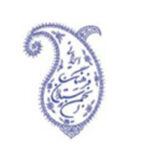Counsellor’s closing remarks at National Convention: Ayafor Temengye Ayafor
The following is a transcript of remarks made by member of the Continental Board of Counsellors, Mr. Ayafor Temengye Ayafor, at the close of the 72nd Bahá’í National Convention, 2 May 2022.
I hope you have found this space as enriching as I have. I have a lot of thoughts and have been thinking about the implications of this Nine Year Plan for us as individuals, institutions and as a community.
We started this weekend talking about the sailing analogy. The story of how ‘Abdu’l-Bahá administered the affairs of the Cause. Of what He said: that He pulls the sails of the ship firmly and fastens the ropes tight, locates His destination and with the power of His will, holds the wheel and heads out, and doesn’t change course no matter the threat to the safety of the ship. It seems to me that the House of Justice is helping us understand where we are on that course on which the Beloved Master set the Ark of the Cause, and I just wanted to highlight a few of these things, each of which I believe call for deep reflection.
In its 30 December 2021 message, the House of Justice starts by telling us why we were created, to “work for the betterment of the world and live together in concord and harmony,” and that Bahá’u’lláh has revealed teachings that allow us to do this. That building a society that consciously pursues this purpose will be the work of not only this generation, but future generations to come. And that we welcome all those who work alongside us on this mission, which is, at this point focused on a single aim: a release of the society-building powers of the Faith in ever greater measures.
The House of Justice describes “enkindled souls” being raised up by the processes of the Plan, who are “seeking to gain an ever more profound understanding of Bahá’u’lláh’s teachings—’the sovereign remedy for every disease’—and to apply them to the needs of their society.” They say the efforts of these enkindled souls “advance to the alternating rhythm of action and reflection,” and that “setbacks leave them unfazed.”
And then they tell us that there is evidence of what happens when we try to build communities like this: “In places where growing numbers are helping to build communities of this character, the power of the Cause to transform people’s social existence, as well as their inner lives, is becoming increasingly visible.” If we pursue the Plan’s central aim earnestly, they are sure we will cause “many, many such communities to emerge.”
The House of Justice then helps us to visualize this work in the context of the movement of clusters, which will remain the basic model for the expansion and consolidation of the community, and in this context we have a path set out in front of us by clusters that have moved further, and the Counsellors and Auxiliary Board members can share insights from these clusters. However, the challenge facing the friends at the grassroots is essentially the same wherever they reside: “They must be able to read their own reality and ask: what, in light of the possibilities and requirements at hand, would be fitting objectives to pursue in the coming cycle or series of cycles?”
Along the path of development of a cluster, the House of Justice describes neighbourhoods and centres of intense activity that, of course, are engaging a lot of people; that are at the third milestone, or between the second and the third milestones. But then they say, across the cluster, intense activity is also being carried out by the generality of the believers. And they say there is a rising spirit of universal participation in the work of community building.
The House of Justice says, “In practice, this means the mobilization of a sizeable number of Bahá’ís who are creatively and intelligently applying the Plan’s framework for action to the reality of their own circumstances wherever in the cluster they live. It entails families and individual believers working together and making a conscious decision to see themselves as belonging to an expanding nucleus.”
And I don’t know if you remember, but in the last Plan, in 2015 when the House of Justice described the movement of a cluster from the first milestone to the second milestone, the key ingredient was an expanding nucleus. They said there needs to emerge a group of friends who are thinking together and organizing activities, and that this group needs to expand.
If it takes an expanding nucleus to move a cluster from the first to second milestone, can you imagine the implications for a cluster at the second or third milestone if hundreds of families and individual believers work together and make a conscious effort to see themselves as belonging to an expanding nucleus? We are talking about hundreds of essentially milestone two neighbourhoods around each of these nuclei. Across the cluster, it may be 100 believers, it may be 1000 believers, but each family is the seed of a milestone two cluster wherever they reside. So, you can just imagine what it means when we think about bringing the society-building powers of the Faith to the people of the world.
This has implications for the institutions of the Faith, particularly Local Spiritual Assemblies. As institutions of the Faith, we’re building an army. Let’s say we – as the House of Justice asks us to envision the first four years, and then the last five years of the Nine Year Plan – imagine that the institutions take the first four years just to build capacity in families and individuals to see themselves as an expanding nucleus.
Going to the second milestone implies 20 or so activities in general. Going to the third milestone may be 100 activities. And we’ve shared a number of stories in the past of a single family, in thinking of themselves as an expanding nucleus, having been able to advance a cluster from the first milestone to the third milestone. Imagine what it looks like if a hundred of these families in your cluster are able to advance their nucleus, wherever in the cluster they reside, from the first milestone to the third milestone. In some ways, on the one hand you’re seeing the movement of clusters from one stage to the next, but then, within a cluster, the same pattern is happening; the movement of nuclei from one stage to another, very much mirroring the advancement of clusters.
We have 16 cycles in the first four years of the Plan. We have 20 cycles after that. This is 16 times that a family can reflect and plan for the cycle, and ask themselves the question, “What in light of my own reality can I contribute in the next cycle?” After 16 times of practice, we will just unleash these families on the last five years of the Nine Year Plan and just watch what happens in our clusters.
In its message, the House of Justice then talks about the training institute. And there are just a couple of things I wanted to share on the training institute. First, it’s clear, they give us this expansive view and ask us to see the training institute as a potent means for releasing the society-building powers of the Faith. In that context, they say it’s clear that this is an educational process in a state of constant refinement. When we were at the Conference of Counsellors, we had one session where friends were describing how materials have been created to supplement the training institute: this instrument in constant refinement. One of the friends from the Democratic Republic of the Congo had shared – and I want to maybe play a recording of this – they shared that, in their clusters, the youth go through the institute and it’s quite simple for them to do that. They can read, they can understand, but then when they’re trying to spread the institute to the rest of the population – their parents, their grandparents – they put it to song. And the comment he made was that every single sentence, every single paragraph, in all of the courses of the institute, are put to song. And so as he was sharing this, one friend said, “Can you guys sing one of these?” And so this is a recording of that, and we’ll just maybe play the first few seconds.
[Playing a clip of a group singing]
Thank you. It’s a bit long so I asked them to only play a few minutes.
And at the end, we asked them what was this? And they said, “This is Book 4.” In Book 4, they’re talking about the martyrdom of the Báb, and they talk about crisis and victory, and this song just covers all those sections.
The other thing that I wanted to mention about the institute is that the House of Justice gives it to the youth. It says that the youth need to consider the institute as their sacred charge. And I was thinking about this and realizing, when we look at the youth, do we see them as the House of Justice does, as being charged with this instrument that they say is a potent means for releasing the society-building powers of the Faith?
When we started serving in our neighbourhood, I had a dream at one point where I was running in the field with lions. They weren’t attacking me, but they were running alongside me. And when I was exploring, I just was sharing it with some of the friends in the neighbourhood, and they said, “Oh, you know that passage in Book 6 that talks about the lions?” And they said, “This is probably referring to the youth.” And I remember when talking to one of the members of Teaching Centre, she said, “These youth are like lions. We should not keep them in cages.” And I think when we are referring to our youth, we have to think about them in this way. The House of Justice has allowed them now to vote at the age of 18. We often forget that at the age of 15 they are already given responsibility for their own spiritual development as Bahá’ís. But the youth have been given this sacred charge of the institute, and sometimes I feel like we adults are the ones who are worrying about how the youth should participate, but the youth should be worrying about how we should participate.
In many parts of the world, in fact, the youth are taking responsibility not only for their own development, but for the development of their communities. Some stories that were shared were about how, for example, the youth are asked, “Why are you serving as an animator? Why are you spending all of this time in the field?” And they were saying, “Because if we don’t learn how to teach our young people to read reality, then we’re lost. And so I’m committing my time to raising up the institute.” And I think that for us as well, in our community, we need to bring the youth into this conversation. We need to bring them to study this message. I’m grateful for the delegate that shared about the 2013 youth conference materials, because the House of Justice really addresses the youth, gives them the responsibility, and then allows them to make decisions and arise.
It’s interesting that the House of Justice uses similar language about the expanding nucleus as they do with the youth. For the expanding nuclei, they say “Such groups of friends set about widening the circle of participation in their activities by engaging with the networks to which they belong – networks created through a place of work or study, a local school, or a community hub of another kind – and by accompanying others who arise to serve alongside them.”
And then for Bahá’í youth, when they talk about the fact that they’ve given youth this sacred charge, they say they should “seize every opportunity – in their schools and universities, and in spaces dedicated to work, family, or social interaction – to encourage more and more souls to benefit from the institute’s programmes.” So even our youth need to be thinking of themselves as expanding nuclei and always advocate for the training institute.
And then finally, the House of Justice talks about the implications for the institutions of the Faith. They talk about the fact that we have to advance these multiple lines simultaneously, and they give us four things to consider to help us. We have to focus, but advance multiple lines. They say we must have an “expanded vision”; we need to have “a nuanced understanding of coexisting imperatives”; we need to have “added flexibility”; and we need to have “heightened institutional collaboration.”
I wanted to touch on one of these elements: an expanded vision. If, as institutions, we begin to think of the believers and friends across the cluster as an army, the question that comes to my mind is, are we nurturing pioneers, or are we nurturing congregations? If we have the mission of transforming the world – considering the disintegrating forces in the world – and we see that we have this army, then the way in which we work with it should reflect the fact that we have enkindled souls. These enkindled souls have to go and enkindle other souls. Our purpose is not to get together and reflect all the time, but to reflect briefly and to go out and act.
We are enkindled, and there is no time. These souls have to be in their own corner. Even when we talk about the dissemination of insights, learning from each other, there is a difference between wanting to go participate in something that’s happening, and wanting to go learn so I can implement where I am – wanting to see where the next stage in my development is. These enkindled souls who are always looking to expand the nucleus are now always thirsty for what else each other is learning. It’s a certain environment that we as institutions have to create in our communities.
So to conclude, friends, I just want to share that after all of this the House of Justice says that the context of what has been described is a historic mission. It writes, “We hope to have impressed upon you, in these pages, that the present-day capacity of the Bahá’í community, combined with the discipline it has achieved through adherence to a coherent framework for action, has prepared it for an extensive, rigorous test of all its resources, spiritual as well as material.”
The House of Justice says that the Plan will “make demands of the individual believer, the community, and the institutions reminiscent of the demands that the Guardian made of the Bahá’í world at the outset of the Ten Year Crusade.” When I think about this, I think about the sacrifice that was made by all of these friends, fanning out across the world to establish Bahá’í communities in different parts, different countries; they didn’t know where they were going. Sometimes alone, or as a family. Really going on a mission – a complete upheaval of their lives in the path of their Beloved. And now I can envision each family, wherever they reside, beginning to work and think of themselves in this way, to gain a deeper understanding of who they are and what their responsibilities are to contribute to the betterment of the world, and to form a nucleus, to become part of a nucleus, one that expands cycle after cycle as they set about this mission with focus and determination.
I think about the institutions at that time. If you could imagine the institutions that were sending all of these friends, what weight was on their shoulders? I don’t know where I’m sending this person. What’s going to happen to them? But they were encouraging of young people, young couples, old people. The oldest person to pioneer was in their 80s, and the institutions let them drop everything and go. And I wonder what this entails for our institutions today? We must see the capacity that has developed already in our community. Every single believer today has a lot more capacity than the believers who arose to go. The training institute has built that for us. And for our community to see that we have this richness of capacity, and to work with them in this way, to see them as an army. ‘Abdu’l-Bahá says in one of his prayers in the Tablets of the Divine Plan, that this is a “heavenly army,” and he wants them to become “like unto a regiment and conquer these countries through the love of God and the illumination of divine teachings.”
I think about the community and the environment it created that was so focused on attaining the goals of the Ten Year Crusade and wonder how our community today can be assisted to maintain focus on this single aim of releasing the society-building powers of the Faith in ever greater measure. The House of Justice says, “If, by the grace of Almighty God, the friends should succeed in reaching the heights of heroism to which they are now summoned, history will assuredly pay tribute to their actions in terms no less glowing than those with which it honours the glorious deeds that decorate the annals of the first century of the Formative Age.”
History awaits our community. Will our own deeds decorate the annals of this century of the Formative Age? All that is being asked of us is that we succeed in reaching the same heights of heroism to which we have been summoned. Much like all the friends who rose up at gatherings such as these to respond to the goals of the Ten Year Crusade – some got up spontaneously and left – we must all rise up and resolve to be champions of this Nine Year Plan and commit ourselves to reaching those heights of heroism. And we must take this spirit back with us to our units and communities.
Thank you, friends.
*All quotations (besides the prayer above) are from the 30 December 2021 message of the Universal House of Justice to the Conference of the Continental Boards of Counsellors.
Category: Elections, Features, Institutions








